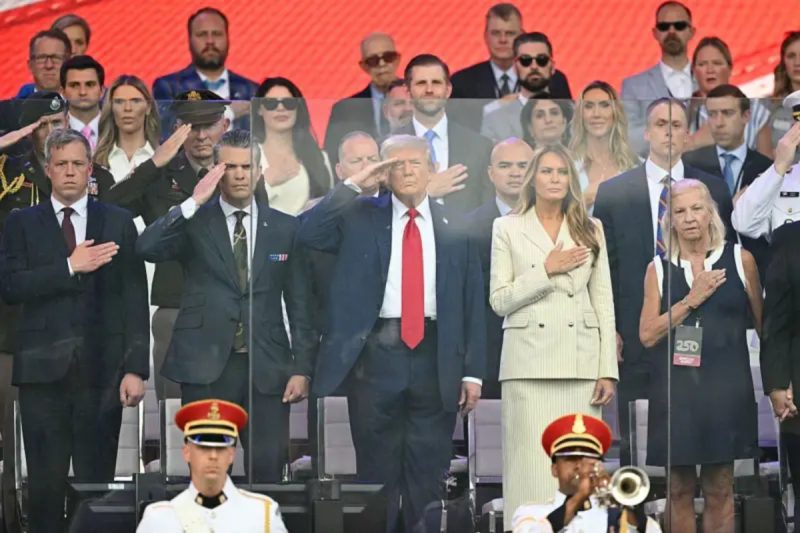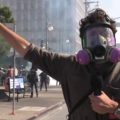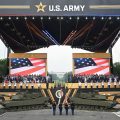
On Donald Trump’s 79th birthday, the United States witnessed a stark juxtaposition: a large military parade in Washington D.C., and widespread, arguably the largest, protests against his presidency since his return to power. The spectacle unfolded on a day marked by both celebration and significant unrest across the nation.
The highly publicized military parade, showcasing over 6,000 soldiers, 150 vehicles, and 50 aircraft, was a long-held ambition of President Trump. The event, commemorating the 250th anniversary of the U.S. Army, saw the President and First Lady Melania Trump taking prominent positions as the procession moved down Pennsylvania Avenue, near the White House. While presented as a tribute to American military history and a celebration of national pride, the parade, estimated to cost up to $45 million, faced criticism for being perceived as a vanity project and a misallocation of taxpayer funds.
Simultaneously, massive protests erupted across the country under the banner “No Kings,” reflecting a deep-seated opposition to Trump’s presidency. These demonstrations, occurring in dozens of cities and towns, were widely considered to be the largest anti-Trump protests since his return to power. The protests, capturing widespread attention, highlighted the nation’s deep political divisions and the ongoing struggle for political power.
Adding to the day’s tension, news broke of the politically motivated assassination of a Minnesota state legislator, further fueling political discord and highlighting the volatile climate. The governor, Tim Waltz, confirmed the murder was politically motivated, adding to the already charged atmosphere.
Images from across the country depicted a range of reactions: from the meticulously choreographed military parade in Washington D.C., showcasing historical military artifacts and aircraft, to the passionate and often confrontational protests in cities such as San Francisco, Los Angeles, and Charlotte. In Los Angeles, where some prior week’s protests had turned violent, demonstrators focused on ending ICE raids targeting undocumented immigrants. Many protests across the country resulted in arrests and clashes between demonstrators and law enforcement. The “No Kings” slogan echoed throughout, emphasizing the sentiment that the U.S. has operated without a king since its independence in 1776.
The day’s events served as a powerful symbol of the deeply divided political landscape of the United States. The juxtaposition of a costly military display and widespread, passionate protests underscored the intense polarization and ongoing political battles shaping the nation’s future.










